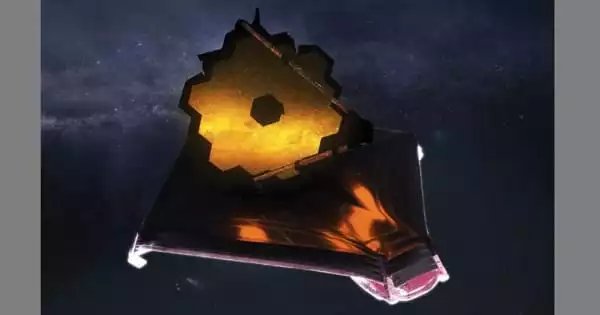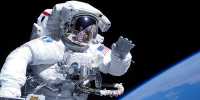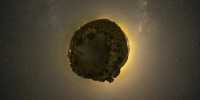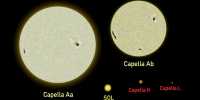The James Webb Space Telescope is an infrared observatory that orbits the Sun about 1 million miles from Earth in order to discover the earliest galaxies that formed in the early cosmos and to observe stars developing planetary systems. The James Webb Space Telescope (JWST) is NASA’s largest and most powerful space scientific telescope. It is a world-class observatory with a huge infrared telescope with a 6.5-meter primary mirror.
NASA’s James Webb Space Telescope team completed the final stage of all major spacecraft deployments to prepare for science operations by fully deploying its 21-foot, gold-coated primary mirror. The Webb project, a collaboration between the European Space Agency (ESA) and the Canadian Space Agency, will investigate every stage of cosmic history, from within our solar system to the most distant detectable galaxies in the early cosmos.
“Today, NASA reached another engineering milestone that had been in the works for decades. While the trip is not over, I join the Webb team in exhaling a sigh of relief and picturing the future breakthroughs that will inspire the globe “NASA Administrator Bill Nelson stated. “The James Webb Space Telescope is an extraordinary project that is on the verge of unraveling the mysteries of our universe and seeing the light from the earliest galaxies. Each accomplishment, both past and future, is a monument to the hundreds of inventors who have poured their hearts and souls into our purpose.”
I am extremely proud of the team that accomplished this first-of-its-kind feat, which spanned countries and decades. Webb’s successful deployment exemplifies the best of what NASA has to offer: the courage to try daring and difficult things in the name of yet-undiscovered discoveries.
Thomas Zurbuchen
Prior to launch, the two wings of Webb’s primary mirror were folded to fit inside the nose cone of an Arianespace Ariane 5 rocket. The Webb team began remotely unfolding the hexagonal parts of the primary mirror, the largest ever sent into orbit, after more than a week of other important spacecraft deployments. This was a multi-day process, with the first side deployed on January 7 and the second side deployed on January 8.
At 8:53 a.m. EST, ground control at the Space Telescope Science Institute in Baltimore began deploying the mirror’s second side panel. The crew announced all major deployments completely accomplished when it extended and latched into position at 1:17 p.m. EST.
The world’s largest and most sophisticated space scientific telescope will immediately begin repositioning its 18 primary mirror segments in order to align the telescope optics. The ground team will direct 126 actuators on the backsides of the segments to flex each mirror, a process that will take months. The crew will then calibrate the research instruments before receiving the first photographs from Webb this summer.
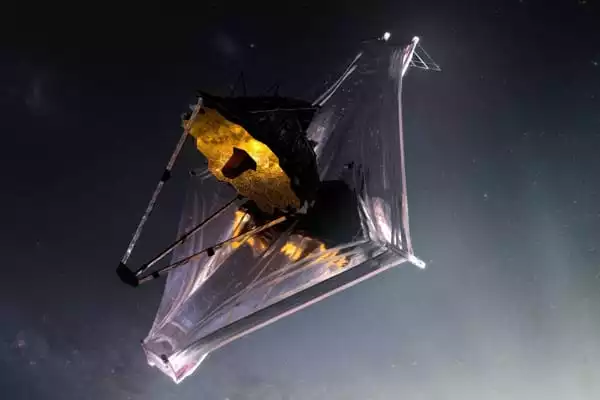
“I am extremely proud of the team that accomplished this first-of-its-kind feat, which spanned countries and decades,” said Thomas Zurbuchen, assistant administrator for the Science Mission Directorate at NASA Headquarters in Washington. “Webb’s successful deployment exemplifies the best of what NASA has to offer: the courage to try daring and difficult things in the name of yet-undiscovered discoveries.”
Webb will soon undertake a third mid-course correction burn, the third of three planned to accurately set the telescope in orbit around the second Lagrange point, generally known as L2, about 1 million kilometers from Earth. This is Webb’s final orbital location, where its sunshield will shield it from light from the Sun, Earth, and Moon, which could interfere with infrared light measurements. Webb is meant to look back over 13.5 billion years in order to catch infrared light from astronomical objects with considerably higher detail than ever before, as well as to study our own solar system and other worlds.
“The completion of all deployments of the Webb Space Telescope is historic,” stated Gregory L. Robinson, Webb program director at NASA Headquarters. “This is the first time a NASA-led effort has attempted to complete a difficult sequence to unfurl an observatory in orbit – a great feat for our team, NASA, and the rest of the world.”
Webb’s location will provide it with a panoramic view of the universe while also keeping the telescope’s optics and scientific instruments cool enough to function and perform optimal science. Webb was initially known as the “Next Generation Space Telescope” (NGST), but it was renamed after former NASA administrator James Webb in September 2002.
The mission is managed by NASA’s Science Mission Directorate. The project is managed by NASA’s Goddard Space Flight Center in Greenbelt, Maryland, which also controls the Space Telescope Science Institute, Northrop Grumman, and other mission partners. Several NASA centers, including the Johnson Space Center in Houston, the Jet Propulsion Laboratory in Pasadena, the Marshall Space Flight Center in Huntsville, Alabama, and the Ames Research Center in Silicon Valley, participated to the project in addition to Goddard.
